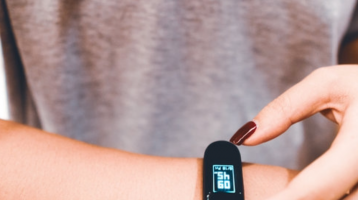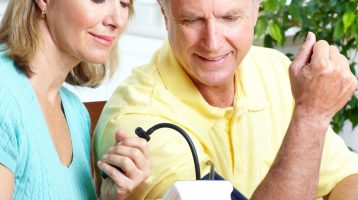Basic Care
Vitamins, trace elements and minerals are essential for our bodies to function well. No matter whether it is for healthy metabolism and organs, defense against pathogens and physical and mental activity would not be possible for our bodies without all of these valuable substances. A poor lifestyle, substantial hormone changes during andropause and advanced aging lead to a drop in micronutrient levels. The result for the male organism can be in the form of illnesses or deficiency symptoms, which are typical in the middle years of life. The science behind chronobiology has proven that the body needs certain substances at only specific times of day, while others are needed throughout the day. Some work best in the morning, and others reach their greatest potential in the evening. Individual nutrients can be taken at the same time as they can complete and even strengthen each other’s impact, but others need to be taken at different times.
A prescription that is administered according to chronobiology makes vitamins, minerals, trace elements and plant extracts available each at the correct time of day so that they can work together optimally and ensure that they are ideally absorbed, unlocked and used by the body. Additionally, the combination of active ingredients must be customized to fit the specific needs of the male metabolism. Substances for morning consumption have a vitalizing effect and need to increase energy and improve mental elasticity, whereas evening substances need to support reparative processes and slow and calm down the metabolism.
Substances for the Morning (Activating Effect):
- Beta-Carotene
- Lutein
- Lycopene
- Choline
- Inositol
- Citrus-Bioflavonoide
- Calcium
- Magnesium
- Manganese
- Borium
- Chromium
- Selenium
- Molybdenum
- Iodine
- Muira-Puma-Extract
- Damiana-Extract
- Vitamin A
- Vitamin B6
- Vitamin C
- Vitamin D
- Vitamin E
- Vitamin K
Substances for the Evening (Regenerative Effect):
- Soy-Isoflavonoide
- Niacinamide
- Pantothenic acid
- Biotin
- Folic Acid
- PABA
- Potassium
- Zinc
- Iron
- Copper
- Smilax
- Ginseng
- Ginger
- Soy-Isoflavonoide
- Vitamin B1
- Vitamin B2
- Vitamin B12
Male Fertility
Infertility affects many people. On average, one in six couples have problems conceiving on the first try. In one third of the cases, the problem rests with the man. The reasons for this are numerous. Besides several illnesses, other factors like alcohol, nicotine, poor nutrition, stress and environmental toxins also play a significant role. The analysis of sperm quality through a semen analysis is an effective treatment which should take place even with moderate abnormalities. A complete semen analysis considers sperm count, motility and concentration.
Phytonutrients, healing plants and other substances can increase the motility, vitality and number of sperm and can ensure higher quality of sperm cells. Nutritional supplementation according to chronobiological standards positively impacts sperm production in every case. The maturing phase of sperm needs to be accompanied by a high quality supply of nutrients. Individual plants serve to strengthen libido and hormone production, enzymes increase immune defense and vitamin-like amino acid active ingredients ensure improved sperm motility. To obtain the best possible success, nutritional supplementing must take into account the chronobiological standards for administration of the substances at the correct time of day. Active ingredients administered in the morning support sperm maturation and heighten motility and evening substances increase male testosterone.
Substances for the Morning (Activating Effect):
- L-Carnitine
- L-Arginine
- Coenzym Q-10
- Vitamin B6
- Vitamin C
- Vitamin E
- Pyrroloquinoline quinone (PQQ)
- Selenium
- Beta-Carotene
- Omega-3
Substances for the Evening (Regenerative Effect):
- Maca
- Tribulus terrestris
- L-Glutathion
- Zinc
- Copper
- Vitamin B12
- Folic Acid
- Omega-3
- Pyrroloquinoline quinone (PQQ)
Andropause and Its Impact
Plant substances that have a mildly hormonal effect have long been helpful to men in the treatment of symptoms that occur during andropause.
In men, a creeping hormone deficiency sets in between the ages of 40 and 55. The male andropause (Greek for “male halt“) has a similar aging process as that of women, except that the female organism loses its messenger substances rather quickly, whereas the male sex hormones decline at a slower rate. Andropause (internationally termed as PADAM) is accompanied by a loss of libido, decrease in virility, minimal ejaculation and erectile dysfunction. Other ailments include joint and bone pain, intense sweating, hair loss, back problems, dry skin and fatigue. Nervousness, sleep disturbances, trouble concentrating and depression are also typical. Testosterone and other hormones such as melatonin, the growth hormone HGH, the anti-aging hormone DHEA and pregnenolone decrease dramatically, causing a man to lose his most important metabolic regulators. Since testosterone levels sink more than male estrogen, this can lead to the breakdown of muscles and changes in the fat metabolism, which often results in a larger chest or thicker stomach.
Early hormone replacement can help to maintain health and hamper signs of aging. The use of valuable phytonutrients can be effective as an alternative to hormone regulation.Low testosterone levels in men are termed as hypogonadism, which can take different forms. In case of a simple and slight lowering of this hormone, testosterone or ester can be taken orally. Take into consideration that orally taken testosterone is dismantled very quickly, which hardly allows for physiological serum levels to be reached. Additionally, it must be taken multiple times during the day (morning, noon, evening), which leads to serum levels that are not chronobiological. Alternatively testosterone can also be applied as a gel. In order to follow the standards set forth in chronobiology the application should take place in the morning. Ideal application sites are the outside of the upper arms or the thighs.
In case of extremely low values, or in cases where the above mentioned therapy is not sufficient, testosterone can also be shot as a deposit into the gluteal muscle. The most suitable application is the 3 month shot, which needs to be repeated every 12 weeks. Independently of the time of administration, this allows you to reach a long lasting physiological serum value over a long period of time.
If a slight testosterone deficiency is accompanied by an estrogen deficiency, then it is very likely that that primary hormone DHEA is no longer being produced sufficiently. In these cases the serum value of DHEA should be measured in the mornings and administered orally according to the results of this test. After 4 weeks the values should be tested once in order to determine whether the DHEA value, as well as the value of other hormones which are metabolized in DHEA, has been normalized.
A number of medicinal plants, in combination with other ingredients and components, have a surprisingly positive effect on overall hormone deficiency in the male body. These phytonutrients strengthen protection against hormone dependent illnesses, are completely natural and are very compatible. Substances for testosterone fabrication are administered in the evenings to provide for enough time at night to activate testosterone production and evening substances serve as prostate protection.
Positive Effects of Phytonutrients on the Male Body:
- Improvement of lack of drive
- Support of blood circulation
- Positive effect on benign prostate enlargement
- Protection from hormone dependent tumors
- Stimulating effect
- Increase of testosterone production in the morning
- Memory improvement and creation of more muscle strength
- Positive impact on the cardiovascular system
Substances for the Morning (Activating Effect):
- L-Arginine
- Taurine
- Saw Palmetto Extract
- Lignane
- Vitamin B1
- Vitamin B2
- Vitamin B6
- Vitamin C
- Vitamin E
- DHEA
- Pregnenolon
- Testosterone
Substances for the Evening (Regenerative Effect):
- Tribulus terrestris
- Niacinamide
- Ginkgo Biloba Extract
- Zinc
- Vitamin B12
- Melatonin
- HGH
With increasing age in men, changes also occur in the prostate, a chestnut-sized gland located under the bladder which consists of about 30 to 50 individual glands. These produce a secretion that is dispensed through the urethra at ejaculation and makes up around two thirds of its volume. A change in the prostate takes place between the ages of 40 and 50. One of the most common urinary disturbances in men is benign prostate hyperplasia (prostate enlargement), which accompanies the decrease in male testosterone production. This can lead to difficulties urinating.
Combatting Age Related Prostate Ailments through Use of Active Substances in a Timely Manner in Accordance with Chronobiological Standards
In order to counteract age related prostate ailments, phytonutrients which inhibit growth and protect cells can help. During the day the emptying of the bladder is supported and at night inflammatory reactions are reduced, using a chronobiological concept which allows the effects of the substances to strengthen each other.
Substances for the Morning (Activating Effect):
- Pumpkin Seeds
- Stinging Nettel
- Aspen
- Goldenrod
- Esperagus
- Selenium
- Omega-3 (EPA, DHA)
- Vitamin C
- Vitamin E
Substances for the Evening (Regenerative Effect):
- Astaxanthine
- Saw Palmetto
- Pumpkin Seed
- Resveratrol
- Beta-Sitosterine
- Omega-3 (EPA, DHA)




